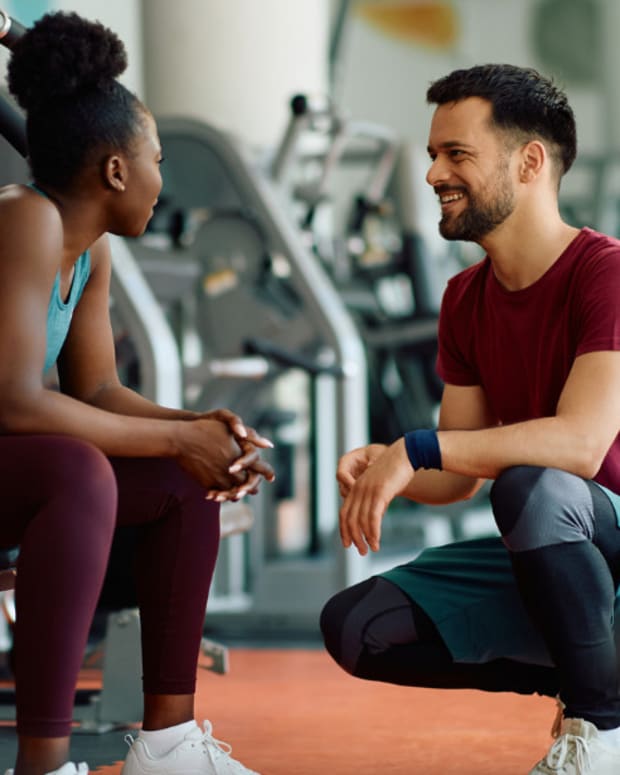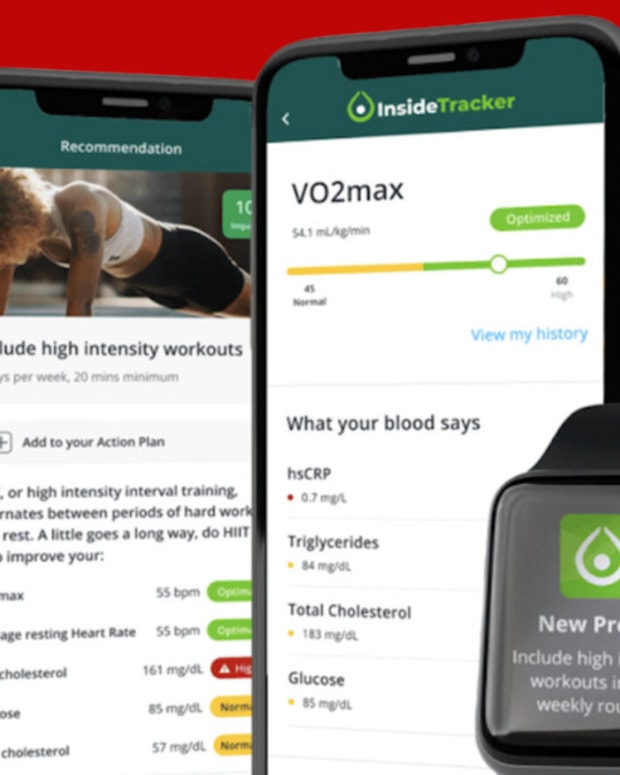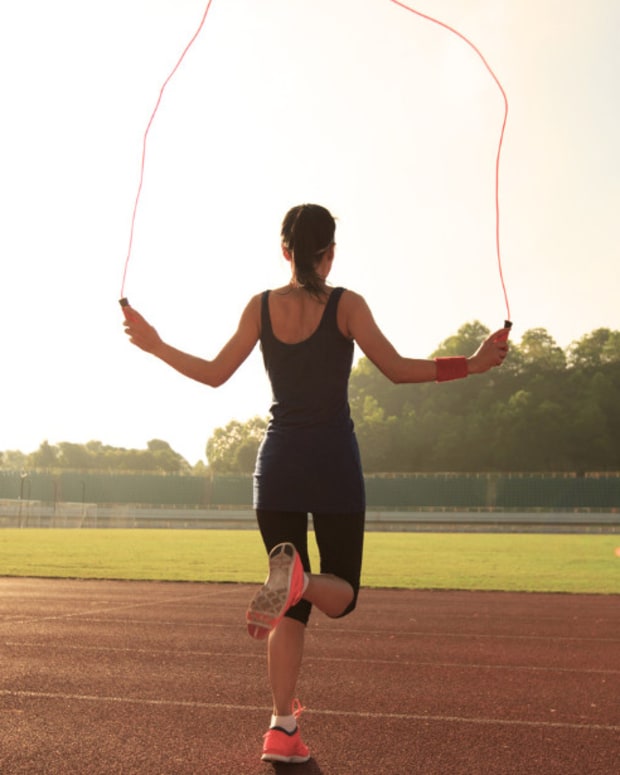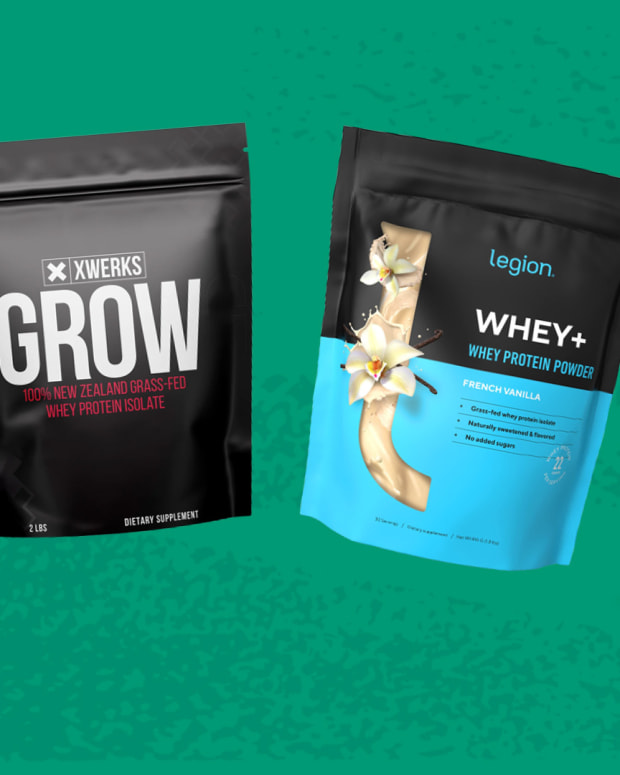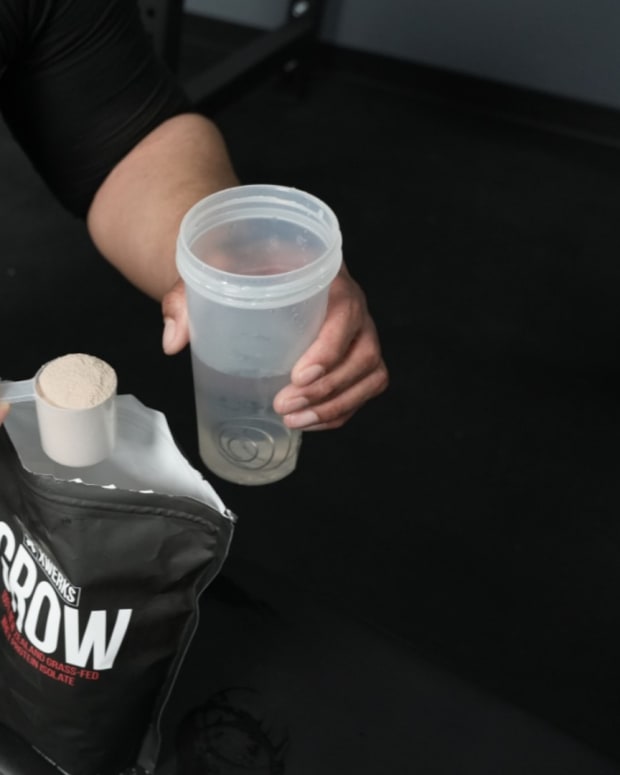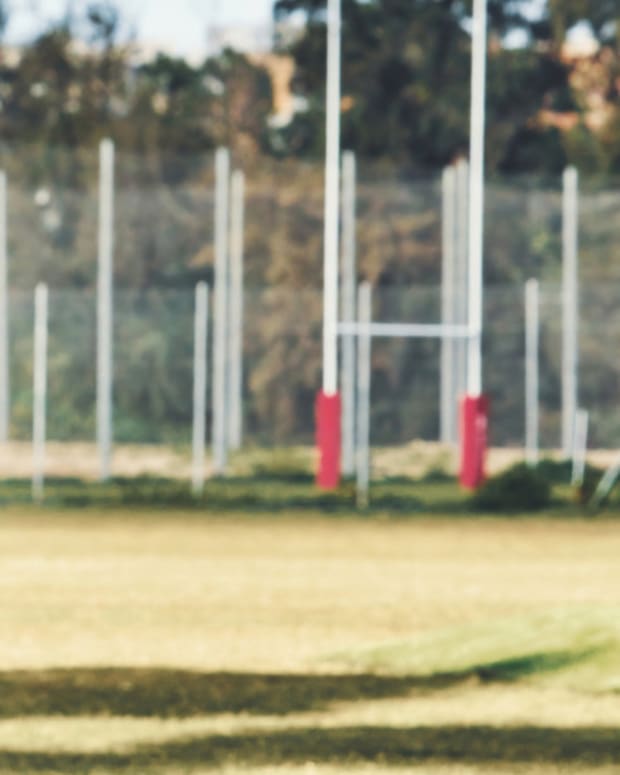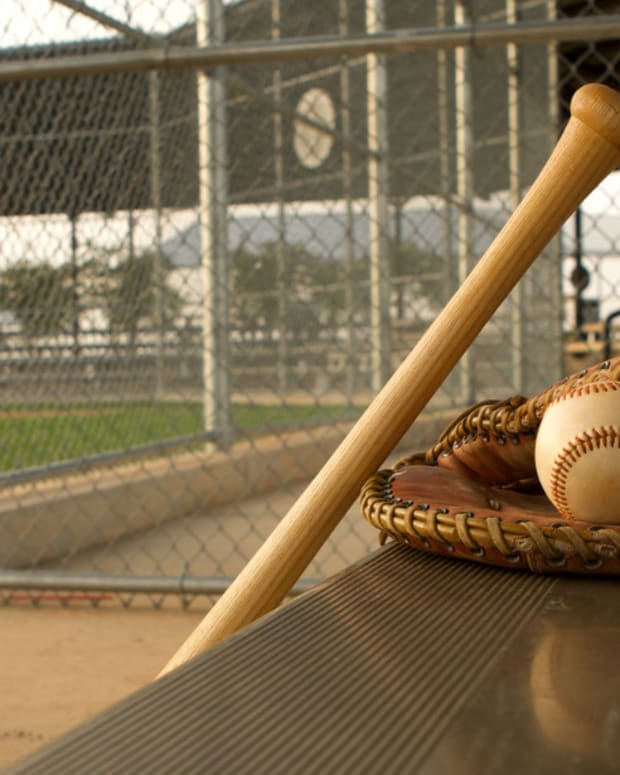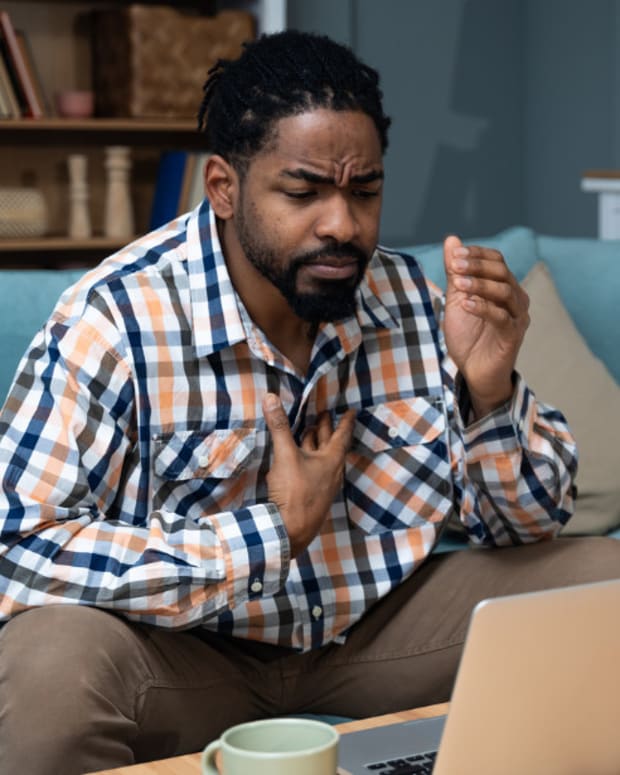The products featured in this article have been independently reviewed. When you buy something through the retail links on this page, we may earn commission at no cost to you, the reader. Sports Illustrated editorial staff are not involved in the creation of this content. Learn more here.
Compression socks aren’t just for nurses and post-surgery recovery anymore. They’ve become a staple among athletes on the track, football and soccer fields, and beyond. The best compression socks hug your feet and lower legs, remain breathable and provide the right amount of cushioning and support for the sport at hand.
These snug socks come in different compression levels, which are measured in millimeters of mercury (mmHg). They start at a light eight to 15 mmHg to a very high 40 to 50 mmHg that you can only get with a prescription. Your comfort level, activity and medical history can help guide your compression level decision. Keep reading to get the sock lowdown, plus our recommendations for the best compression socks to make your feet (and calves) say, ahhhh in 2024.
Our Picks for the Best Compression Socks of 2024:
- Best Compression Socks for Women: Sockwell Women’s Pulse Firm Compression Sock
- Best Compression Socks for Men: Feetures Graduated Compression Socks
- Best Ankle Compression Socks: Bombas Men's Performance Running Ankle Socks
- Best Mid-Calf Compression Sock: Swiftwick Aspire
- Best Compression Socks for Circulation: Go2 Socks Compression Socks
- Best Budget Compression Socks: Copper Fit Energy Compression Socks
- Best Open Toe Compression Socks: Zensah Running Leg Compression Sleeves
- Best Compression Socks for Running: CEP Men’s Running Compression Ultralight Socks
- Best Compression Socks for Travel: Lululemon Micropillow Compression Knee-High Running Sock
- Best Compression Toe Socks: Injinji Ultra Compression OTC
Best Compression Socks for Women: Sockwell Women’s Pulse Firm Compression Sock
Key Features:
- Price: $29.99
- Sizes: Small-medium, medium-large
- Colors: Six
- Compression: 20-30 mmHg
The Sockwell Women’s Pulse Firm Compression Socks have simplified sizing, light cushioning and graduated compression, ranging from 20 to 30 mmHg. Graduated compression applies tighter compression around the foot and ankle and gradually applies less compression toward the sock’s cuff. Sockwell incorporates mesh breather panels throughout the sock to enhance ventilation.
These Sockwells are made of a blend of merino wool, bamboo rayon, nylon and spandex. Merino wool and bamboo rayon wick moisture and regulate temperature for cooler, happier feet. There’s arch compression for added stability and to support the plantar fascia. The compression through the calves is separated into four zones to promote blood flow back up the leg. Light cushioning in the toes and heels leaves more space through the forefoot of the shoe and reduces the chances of bunching.
The Sockwells come in six color patterns and two sizes that accommodate feet from a women’s shoe size four to a size 11. Keep in mind that these socks run large, especially for those with small calves for their foot size.
Pros:
- Moisture wicking and temperature regulation of the merino wool and bamboo rayon
- Zoned graduated compression
- Arch compression and support
- Breathable mesh panels enhance ventilation and cooling
- Affordable price
Cons:
- Sizing can run small
Best Compression Socks for Men: Feetures Graduated Compression Socks
Key Features:
- Price: $45
- Sizes: Medium, large, extra large
- Colors: Four
- Compression: 15-20 mmHg
The Feetures Graduated Compression Socks have an anatomical design that provides targeted, graduated compression. An anatomical design is made with specific left and right foot socks for a better fit that reduces the chances of blisters and bunching.
This sock has light support at 15-20 mmHg. Feetures places compression through the arch and heel to lift and support the plantar fascia, while the sock leg has zoned compression. Feetures uses iWick fibers to wick moisture and improve ventilation. Light cushioning through the heel and toes leaves space through the forefoot.
Feetures offers a unique lifetime guarantee that covers holes, general wear and tear, slipping in the heel, stretching or shrinkage, thinning material and piling. A word of caution—even though these socks technically have light compression, users report that they’re particularly difficult to get on.
Pros:
- Lifetime guarantee
- Targeted compression in the arch and heel
- Zoned compression through the calf to promote circulation
- Lots of size options
- Light cushioning reduces bunching
Cons:
- Difficult to get on
- Expensive
Best Ankle Compression Socks Bombas Men's Performance Running Ankle Socks
Key Features:
- Price: $16.50
- Sizes: Medium, large, extra-large
- Colors: Seven
- Compression: N/A
The Bombas Men’s Performance Running Ankle Socks target the arch and heel with an anatomical design and Bombas’ Hex Tec construction. The proprietary poly/cotton blend fabric is durable and breathable, two features that runners are always after, whether they’re running on the road or treadmill.
These socks have Honeycomb Arch support that provides even compression through the arch to support the plantar fascia and relieve plantar fasciitis pain. The anatomical design creates a snug, contoured fit by catering to the differences between the right and left foot. This type of design cuts down on excess sock in the shoe, which can cause blisters or bunching. The Bombas come in seven colors and three sizes for men’s running shoe sizes six to 16. A note on these socks—some users experience slipping in the heel.
Pros:
- Anatomical design better fits the natural curves of the feet, especially around the toes
- Compression arch support
- Moisture wicking material
Cons:
- Sock heel may slip
Best Mid-Calf Compression Sock: Swiftwick Aspire
Key Features:
- Price: $29.99
- Sizes: Small, medium, large, extra-large
- Colors: One
- Compression: 20-30 mmHg
The Swiftwick Aspire is thin enough to fit low-profile technical running shoes. Minimal cushioning keeps the sock fit tight while maintaining 20 to 30 mmHg compression.
Olefin fibers wick away moisture and boost temperature control to prevent heat build-up. Ventilation gets an additional boost with air channels and mesh panels integrated into the design. An arch band keeps the sock in place and provides arch support, while a y-stitch cups the heel for a snug fit.
These socks have managed compression, which means the compression is even throughout the sock. Be aware that the managed compression can cause the socks to feel tighter than usual, especially at the cuff. The Aspire is available in six colors and four sizes.
Pros:
- Low cushioning for a better shoe fit
- Comes in several cuff heights
- Managed compression provides even overall compression
- Breathable fabric and sock design
Cons:
- Managed compression can feel too tight, especially at the cuff
Best Compression Socks for Circulation: Go2 Socks Compression Socks
Key Features:
- Price: $16.97
- Sizes: Small, medium, large, extra-large
- Colors: 34
- Compression: 20-30 mmHg
The Go2 Socks Compression Socks incorporate graduated compression at an affordable price and in a wide range of colors and patterns. The graduated compression is tighter through the foot, heel and ankle and gradually lessens toward the cuff.
Go2 uses silver in its fabric design with claims of antibacterial properties to the socks—great for a sweaty workout on your favorite cardio machine. There is evidence that silver’s antibacterial properties can help control bacteria when applied to fabrics, though there aren’t studies available for these particular socks.
The Go2 socks are made of latex-free spandex and nylon, with cushioning through the heel to add a layer of comfort. These socks are made in 34 different colors and patterns, giving you plenty of choices to express your personality. However, pairs with knitted designs can leave pattern impressions on the legs due to the high compression and varying fabric density. If leg swelling is an issue for you, the solid colors will probably be more comfortable. They can also be warmer than usual because they aren’t made of moisture-wicking fabric, nor do they have breathable design features.
Pros:
- Graduated compression promotes circulation up the leg
- Cushioned heel for added comfort
- Wide range of colors and patterns
- Antibacterial effects of silver may reduce odor
Cons:
- Some patterns can leave an imprint on the legs
- Not made of moisture-wicking fabric
Best Budget Compression Socks: Copper Fit Energy Compression Socks
Key Features:
- Price: $10.99
- Sizes: Small-medium, large-extra large, 2XL-3XL, 4XL-5XL
- Colors: Two
- Compression: 15-20 mmHg
The Copper Fit Energy Compression Socks have copper infused into the fiber to add antibacterial properties to the socks. Copper has natural antibacterial properties. It’s often used on high-touch surfaces to reduce germs. New methods can now apply copper to fabrics to help reduce bacteria and the odor they cause.
These socks also feature 15 to 20 mmHg graduated compression. The circumference of your calf will affect how tight these socks feel. However, many users report that they aren’t as tight as some similarly rated compression socks, giving them a lighter overall feel.
They come in four sizes, two of which use calf circumference to get a better fit, and only two colors. However, for the price, you get a durable compression sock with the added benefit of antibacterial copper.
Pros:
- Copper-infused fibers help fight bacteria and odors
- Light graduated compression
- Four size options, with two based on calf circumference
Cons:
- Few color choices
Best Open Toe Compression Socks: Zensah Running Leg Compression Sleeves
Key Features:
- Price: $39.49
- Sizes: Extra small/small, small/medium, large/extra-large
- Colors: 30
- Compression: Not listed
The Zensah Running Leg Compression Sleeves come in 30 colors and designs for a fun take on compression. More importantly, they offer graduated compression, though the company doesn’t specify the level. However, there’s greater compression toward the ankle that gradually reduces toward the knee. There’s also a chevron-shaped ribbing over the shins to address the pain of shin splints.
These sleeves come in three sizes. Depending on your height, they may reach from ankle bone to knee or just above the ankle bone to below the knee. Zensah uses a double cuff to help keep the sleeve in place.
This type of compression sock works well for those who may be picky about how socks feel. You get needed leg compression, but you can wear your favorite pair of running socks, too. Compression calf sleeves are also easier to put on than a full compression sock. Zensah makes its out of nylon and spandex, with a design structure that promotes breathability.
Pros:
- Chevron ribbing provides shaped compression to address shin splint pain
- Thirty colors provide opportunities for self-expression
- Double cuff holds the sleeve in place
- Graduated compression
Cons:
- Can be too short for taller wearers
Best Compression Socks for Running: CEP Men’s Running Compression Ultralight Socks
Key Features:
- Price: $59.42
- Sizes: III, IV, V (These correspond to the circumference of your calf and range from 12.5—20 inches. A chart is available on the CEP website.)
- Colors: Five
- Compression: 20-30 mmHg
The CEP Men’s Compression Ultralight Socks offer strong 20 to 30 mmHg compression but with ultralight coverage to reduce heat retention and provide a better fit for technical running shoes. These socks are anatomically constructed to position cushioning in the right places based on the structure of the right and left foot.
They’re “ultralight” because they have 25 percent less volume than CEP’s standard compression socks. CEP’s seamless toe closure and lightweight cushioning keep the socks comfortable without getting in the way of shoe fit. They’re made of polyamide (nylon), elastane and polypropylene to wick moisture and reduce rubbing.
I’ve tried the women’s ultralight calf compression sleeve by CEP, and when they say ultralight, they really mean it. While the two products are different, the lightweight design of the sock’s leg is similar. The fabric feels too light for the amount of compression that it offers. It equates to strong compression with excellent breathability (and less heat retention). They come in three sizes and five colors. However, these socks are expensive.
Pros:
- Lightweight design enhances breathability
- Anatomical design enhances fit and reduces rubbing
- Sizing based on calf measurements for a more accurate fit
- Lightweight cushioning adds comfort but doesn’t compromise the fit of shoes
Cons:
- Expensive
Best Compression Socks for Travel: Lululemon Micropillow Compression Knee-High Running Sock
Key Features:
- Price: $38
- Sizes: Medium, large, extra large
- Colors: Five
- Compression: Not listed
Lululemon’s Micropillow Compression Knee-High Running Socks go light on compression but high on comfort, making them a good choice for travel. While Lululemon doesn’t specify the compression level, most users report light compression, which can work well for people stuck in one position for hours at a time. Strong compression can cut into the leg behind the knees or dig into the ankles while sitting.
These socks are made with a breathable mesh to prevent heat retention. They also contain micro-cushioning through the forefoot to support the feet when standing or walking. Lululemon treats the threads with zinc to cut down on odor-causing bacteria.
They also feature a right/left toe design to keep a snug fit and prevent the socks from bunching. These knee-high compression socks come in five colors and three sizes.
Pros:
- Light compression provides comfort while sitting
- Breathable mesh design
- Fibers are treated with zinc to reduce odor
- Right/left toe design for better in-shoe fit
Cons:
- Compression is too light for some users
Best Compression Toe Socks: Injinji Ultra Compression OTC
Key Features:
- Price: $49
- Sizes: Small, medium, large, extra large
- Colors: Four
- Compression: Not listed
The Injinji Ultra Compression OTC separates the toes, protecting them from injury while on long runs. These socks have gentle compression, though Injinji doesn’t offer the exact level of that compression. Made of lycra and nylon, these socks have graduated compression and feature mesh tops to promote breathability.
Toe separation places the toes in a wider format to help more of the foot stay in contact with the ground. They also prevent the toes from rubbing on one another. Injinji includes a compression band around the arch to support the plantar fascia and help maintain the correct sock positioning.
Finally, they have reflective strips for enhanced nighttime visibility. However, some users have reported of quality issues, especially around the logo on the calf, which has been known to fray.
Pros:
- Each toe is wrapped in moisture-wicking material
- Breathable mesh
- Compression supports the arch and maintains the sock's position
Cons:
- Can fray around the logo on the calf
How to Choose the Best Compression Socks for You
Compression Sock Purpose and Personal Preference
Compression sock design is based on compression stockings used in hospitals post-surgery. These socks can be used to improve post-workout recovery and athletic performance, and reduce travel-related swelling.
Your purpose for the sock can help determine the height and compression level you need. For example, travelers on a long flight may opt for a knee-high sock with light compression that’s less than 15 mmHg. Light compression is less likely to cause the sock to dig into the skin or cause other irritations. A marathon runner, on the other hand, may opt for a higher 20 to 30 mmHg pair of compression socks that will keep compression consistent with the high physical demands put on the body.
Your personal preference will also play into the purpose. Some people find high compression uncomfortable and even painful. Others may have narrow calves and require tighter compression to keep the socks in place. Consider what you want to use the sock for and how your personal preferences and needs will affect the type you choose.
Size options
Fit makes a difference in a compression sock’s comfort and effectiveness. One that’s too small might cause painful pressure points. One that’s too big may fall down. Look for a compression sock with size options that work for your height and calf circumference. Some sock manufacturers rely on shoe size, while others require a calf measurement for a correct fit.
While shoe size is an easy way to pick your compression sock size, calf measurement is often more accurate. If you fall outside the normal calf-to-foot ratio, you might consider a compression calf sleeve so that you can wear an ankle sock that’s comfortable and still get compression through the calf.
Compression Level
Compression levels typically fall into one of four categories:
- Light: 8-15 mmHg
- Mild: 15-20 mmHg
- Moderate: 20-30 mmHg
- High: 30mmHg or higher
The term mmHg stands for millimeters of mercury, a measurement of pressure. The higher the number, the greater the compression. Socks with over 30 mmHg are generally only used for medical purposes and may not be sold over the counter.
That leaves three compression levels to choose from if you’re looking for a pair of compression socks off of Amazon or a brand site. For light activities like walking, prolonged standing or sitting, or low-impact exercise, typically a eight to 15 mmHg compression sock will do.
Many performance compression socks come in a moderate 20 to 30 mmHg. These socks are generally used to enhance performance and recovery, along with stretching, foam rolling and other self-massage techniques. However, no matter when or where you’ll wear compression socks, they should feel comfortable. If the socks dig into your legs below the knees, create painful creases at the ankles, or excess pressure through the arches, chances are the compression level is too high for you.
Price
Compression socks can run anywhere from $10 to $100 per pair. Price isn’t always an indication of better quality. However, in general, higher compression socks are more expensive than lower compression socks.
The materials and construction methods also affect the price. Socks made with high-quality, moisture-wicking fabric that feature mesh or channeled designs may come with a higher price tag. Knee-high socks also tend to cost more because they require more material.
Who Should and Shouldn’t Wear Compression Socks
Compression socks can help in many situations, but they aren’t for everyone. People who can benefit from wearing compression socks include:
- casual exercisers
- amateur athletes
- professional athletes
- hikers
- frequent flyers and travelers
- those who stand for long periods of time
- individuals with medical conditions who’ve received medical advice to wear compression socks
These groups of people may experience better comfort and performance during athletic events and enhanced or perceived recovery after athletic performance. However, it’s important to point out that there is some debate about their effectiveness. A 2016 study found that compression socks improve blood volume and flow. And a recent 2021 study found that wearing compression gear reduces the amount of creatine kinase, an indicator of muscle damage. Several studies have also shown there is little to no benefit from wearing compression socks for athletic performance.
The choice is yours and is often worth trying to see how it affects you and how you feel post-workout, whether that be running, basketball, football, baseball or cycling.
There are instances where you should avoid wearing compression socks, namely,
- If you have sensitive skin that’s prone to injury, such as bruising or irritation.
- If you have dry skin that chafes or scratches easily.
- If you’ve been advised not to wear compression gear by a medical professional.
How to Use Compression Socks
If you have a job where you sit or stand for prolonged periods of time, you can wear compression socks while you work. If you’re looking for the performance and recovery benefits of compression socks, wear them while you work out and for a day or two following a hard workout.
Talk to your doctor before wearing compression socks. Err on the side of caution, and try the lowest compression level first. You should also:
- Recheck your compression sock size if you’ve gained or lost weight
- Follow the manufacturer’s instructions for wearing and putting on the socks
- Get rid of the socks when they start to lose their stretch
- Do regular skin checks, looking for red marks that don’t go away, chafing, dents or dryness
- Take off your socks after use and put on a clean pair
- Wash the socks according to the manufacturer’s instructions
How Do I Know What Level Compression Socks I Need?
The safest bet is to talk to your doctor before using compression socks. They know your medical history and can make recommendations based on your fitness level, age, weight and height.
General guidelines include:
- 8-15 mmHg (light compression): Good for standing or sitting for prolonged periods, including travel
- 15-20 mmHg (mild compression): Good for mild to moderate swelling, varicose veins, long-distance travelers whose legs swell, and athletes who prefer lighter compression
- 20-30 mmHg (moderate compression): These socks can be considered medical grade, but they don’t require a prescription. This is a common level for those seeking performance and recovery enhancement
- 30-40 mmHg (high compression): Generally used for medical purposes only and may require a prescription
- 40-50 mmHg (very high compression): Used for medical purposes only and only available by prescription
FAQs
Is there a downside to wearing compression socks?
Compression socks can cause chafing, dryness and irritation. There’s also a risk of restricting blood circulation if you use a sock with compression that’s too high.
Do compression socks raise blood pressure?
There has not been conclusive evidence that compression socks raise blood pressure.
Do compression socks help with blood clots?
Compression socks are used to prevent blood clots, especially in cases of deep vein thrombosis.
Where does fluid go when you wear compression socks?
Gentle compression reduces fluid leaks from the capillaries. It also promotes the capillaries and lymphatic system to absorb and reabsorb those fluids.
How do you hide compression socks?
If you want to hide compression socks, wear long pants or exercise leggings. If you want to wear shorts or capris, pick compression socks in neutral colors like beige or a color that blends in with your other clothing.
Is there anything better than compression socks?
Compression socks are one of the most cost-effective and easiest ways to control swelling and promote blood circulation. Your other option is compression stockings, which look more like women’s hosiery. Compression stockings come in longer lengths that come to the hips or full hosiery.
Can you wear leggings instead of compression socks?
If you don’t have severe swelling, tight leggings can provide some compression. However, it won’t be targeted or graduated. Socks provide the best localized compression and offer stronger compression, too.
How many hours a day should you wear compression socks?
Follow your doctor’s or the manufacturer’s recommendations. If you’re wearing compression socks for medical reasons, you may need to wear them all day. However, if you’re just using them for performance or recovery enhancement, you may only need to wear them while you work out or for a few hours a day.
How tight should compression socks be?
The compression socks should be snug, but they shouldn’t cut off your circulation or cause painful irritation. Start with an eight to 15 mmHg pair before trying 15 to 20 mmHg or 20 to 30 mmHg to see what feels comfortable to you.
What kind of shoes can I wear with compression socks?
You should wear whatever shoes make sense for the activity you're participating in—hiking shoes, running shoes, training shoes, basketball shoes and more are all great options.
Final Thoughts
Consider why and how you want to use the compression socks. If you’re looking for some extra arch support, ankle socks will do. However, if you want to promote blood flow and enhance recovery, knee-high compression socks are a better option. No matter the sock height you choose, the socks should be snug but not restrictive or painful. With the right fit, compression socks can be a valuable asset to your training and recovery.
Prices are accurate and items in stock as of publish time.











